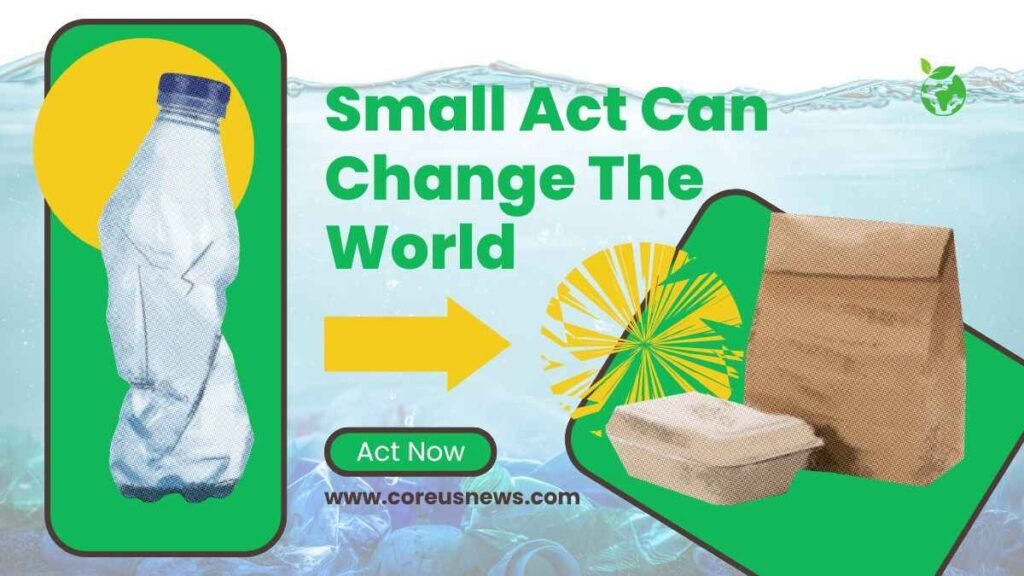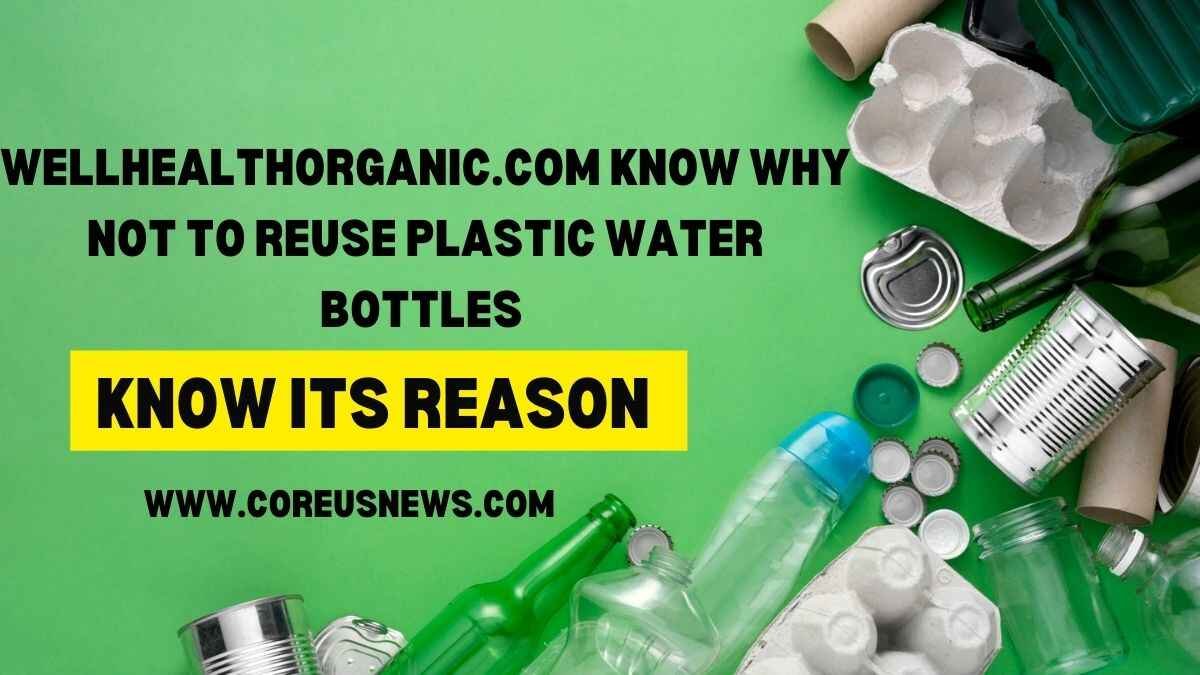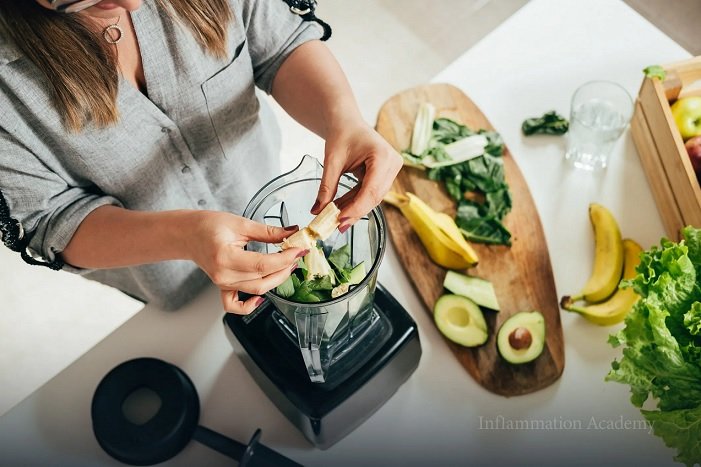Plastic water bottles are used in our day to day activities in particular searching for fluids. They are portable, relatively small and can be easily transport within the hospital or from one facility to another. Although, such utilization of these bottles has health implications when they are being recycle or reused in the process. Despite the absence of tangible data associating microplastics with severe diseases, the growing levels of microplastics in our environment. It becomes possible adverse consequences on man’s health should not be dismiss. Through this article, let us try to understand as per WellHealthorganic.com Know why not to Reuse Plastic Water Bottles know its Reason.
Understanding Microplastics
Microplastics are those which have a particle size of less than 5mm. These particles are almost immortal and cannot be broken down, hence they collect in people’s bodies. The overtime which is called bio-accumulation. Each time you refill the plastic water bottles, you are part of this aggregation. Drinking microplastics every time you take that single sip of water.
The Manufacturing Chemicals
It is these chemicals use in making the plastics which are a principal worry. Most of those chemicals like the plasticizers, stabilizers, and pigments are well understood to be toxic. Some have been associate with severe illnesses such as cancer and developmental complications. These compounds may dissolve in water and find their way into the water. When the bottles are reuse, expose to heat or/and direct sunlight.
Microplastics in Bottled Water
Random research has revealed the presence of microplastics even in bottled water around the world. These particles mostly come from the bottle itself, the bottleneck, and the cap of the bottle. Normally, the microplastic particles that come out from the bottle material are colorless while from the caps are blue or green in color. Bottles have to be open and close severally, and every time. This is done a rubbing or scraping action is created whereby more particles are formed.
Factors Contributing to Microplastic Release
Several factors contribute to the release of microplastics in bottled water:
- Physical Stress: Such movement is not only an obstacle to control but also places physical pressure on the bottles that lead to the detachment of microplastics.
- High-Pressure Water Injection: During the process of water production when bottles are being filled with water at high pressure. Microplastic particles are also released.
- Thermal Impact: When the storage is done under high temperatures, then microplastics contained in plastics can be broken down at higher rates.
Health Implications of Microplastics
Even though there is insufficient evidence on the direct risks which microplastics pose to human health, several dangers have been establishes Microplastics smaller than Food particles as small as 5 micrometers can be swallow or be absorb into the body. These tiny particles can cross the intestinal wall and get distribute in different tissues of the body such as the liver and lymph nodes. These particles when entering the body, can then bring about inflammation, oxidative stress among other things.
Emerging Pollutants and Endocrine Disruptors
Water packed in plastic bottles is classified as emerging pollutant and endocrine-disrupting chemicals (EDCs). These substances can interfere with hormonal functions and have been linked to various health problems, such as:
- Inflammation: Impurities around the body tissues can lead to an inflammation and probably end up causing disease inclusive of cancer.
- Genotoxicity: That’s why microplastics might lead to genetic mutations or changes in a cell, which can lead to diseases.
- Oxidative Stress: Having microplastics in the body also turns to generate reactive oxidants, and is known to cause cell and tissue damage.
- Gastrointestinal Damage: Microplastics which are ingested may affect the gastrointestinal tract in various ways to cause several forms of digestive problems.
Recommendations for Safe Water Consumption
Based on the various dangers attributed to microplastics, it is always wise to reduce the consumption as much as possible. Here are some recommendations to help you make safer choices:
- Avoid Reusing Plastic Bottles: Consequently, The inner surface abrasion of the reuse increases the chances of microplastic shedding with the rising number of reusage.
- Store Bottles Properly: They should also be kept in a cool dry place and should not be expose to direct sunlight so as to avoid thermal degradation.
- Minimize Physical Stress: Treat bottles softly and do not shake them motorially as it enhances the production of microplastics.
- opt for Alternatives: It is advisable that one should avoid using plastic water bottles. You can use glass, clay or brass bottles, stainless steel or any BPA reusable water bottles.
Exploring Alternatives to Plastic Bottles

The efforts to find substitutes for plastic water bottles continues today. Thus, the Ministry of food and consumer affairs has come up with a call to the packaged water producers to find a sustainable way of doing business. Here are some eco-friendly alternatives:
- Glass Bottles: Glass also has no hazardous chemical capable of leaching into water hence environmentally friendly. So, it’s disposable though recyclable; thus, it is a good product for health and the environment.
- Stainless Steel Bottles: Stainless steel bottles are non toxic, recyclable and safer than plastic bottles. They are a preferred option to the plastic bottles commonly used to carry water for the day.
- BPA-Free Plastic Bottles: Some of the given manufacturers provide the bottles made of BPA non-leaching plastic for chemical leakage reduction. Although still plastic these bottles are a better choice for those interested in carrying lightweight items.
Conclusion
The risks implicated with the recycling of plastic used in water bottles are some of the things that one needs to consider before taking a SIP. Transcendently, there is no denying the ease that is associate with the use of plastic bottles; however, the dangers caused by microplastics and chemical leaching cannot be considered to be negligible. In this manner, avoiding the dangers connected with utilized plastic bottles and preferring safer options will allow us to maintain our health to the highest standard and will create a healthier physical surroundings as well.
Due to the ongoing research on the subject of microplastics, it is critical to know the updates on the findings and guidance. Small changes when it comes to the choose of packaging materials that are use, help support innovations and bring changes that will benefit everyone in the future with regards to sustainable hydration.
FAQ’s
Ans. While no plastic bottle is entirely free of risks when reused, BPA-free bottles and those made from higher-grade plastics such as Tritan or HDPE are generally considered.
Ans. It’s advisable to replace reusable plastic water bottles every few months, depending on usage, to minimize the accumulation of microplastics and chemical leaching.
Ans. Boiling water in plastic bottles is not recommended as it can exacerbate the release of microplastics and harmful chemicals due to the high temperatures causing the plastic to degrade.
Ans. Yes, clean reusable plastic bottles with mild dish soap and warm water, avoiding abrasive scrubbers that can cause scratches and increase microplastic release. Allow the bottles to air dry completely.
Ans. Signs of degradation include visible scratches, cloudiness, a strange odor, or a change in the bottle’s texture. These indicators suggest that the plastic is breaking down and releasing more microplastics.



